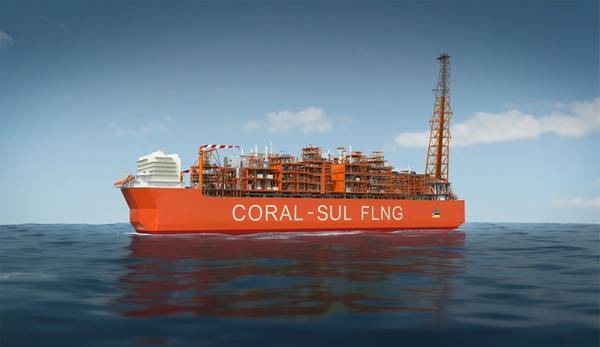LNG from East Africa – how the odds are stacked
Story by lexology.com
How much gas?
Vast amounts. Mozambique alone is estimated to have gas reserves of up to 150 trillion cubic feet (TCF) and Tanzania potentially as much as 50 TCF (Petroleum-Economist). But in a global economy where commodity prices, consumer demand and ‘timing to market’ are crucial, there is no guarantee that even these amounts can be commercialised in the foreseeable future. However, for both countries the prize is great. In an article written by Nadja Kogdenko “East Africa: The Newest LNG Frontier” according to the Mozambique Natural Gas Master Plan the country could potentially earn up to US $5.2 billion per annum by 2026 from LNG exports, creating over 70,000 jobs in the gas sector. If fully monetised, Tanzania could also expect a large inflow of revenue into its treasury.
Where’s the Demand?
Although both Tanzania and Mozambique are forecast to have strong economic growth, there is no possibility that either could hope to consume such quantities of gas if produced at the maximum economic rate, which is the business model that investors and oil companies alike will use.
Globally the picture is more positive. The US Energy Information Administration (USEIA) in their International Energy Outlook for 2013 give the reference case for World GDP increasing on average between 3.5% and 4.6% per annum between 2010 and 2040. It predicts that over the same period the global annual demand for gas will rise from 132 TCF in 2010 to 185 TCF. Much of this demand will come from Japan (its nuclear industry unlikely ever to recover fully from the shock of Fukushima), India, China and South-East Asia all of whom rely heavily on LNG imports. Geographically East Africa is ideally placed to supply LNG to these markets.
What and where is the competition?
Unfortunately for Tanzania and Mozambique there is a lot and it comes in all shapes and sizes. Although, according to Wood MacKenzie, LNG from East Africa should be cheaper than that from Australia (US$7 per MMBTU compared with US$11 MMBTU), such advantage is wiped out by arriving late. Australia should bring on stream Queensland-Curtis, Gladstone and Australia Pacific LNG in 2015 and Gorgon and Wheatstone will follow on thereafter. Other competition will come from the US, now reaping the benefits of a rampant shale gas industry, which anticipates being in a position to export LNG as early as 2015. Canada and Russia equally have plans in the pipeline. Mozambique couldn’t hope to bring LNG on stream before 2018 and Tanzania before 2020. Closer to home, there are a number of LNG projects planned in Africa which if they all succeeded would add 84.1 million tonnes per annum of LNG to the World Market.
Other issues for investors to consider are the race by countries to diversify supply. India and China’s demand for LNG may plateau, even diminish as their own shale gas projects come on stream and renewable technology brings down the cost of green energy, making it an attractive alternative. China’s energy hunger will have been in part satiated by its recent decision to buy 38 billion cubic metres (BCM) per year starting 2018 from Gazprom at a price reputed in an April report by Reuters to be in a range between $10-$11 MMBTU. This would be delivered by the as yet-to-be-built ESPO pipeline where deliveries could rise to 60 BCM per year.
What’s the outlook for Mozambique and Tanzania?
Mozambique and Tanzania are described as being locked in a race to get the first LNG plant up and running on the east coast, or in the case of Mozambique, off the east coast as current investors, Anadarko and Eni, favour a floating LNG plant. And whilst Mozambique may currently appear more politically stable than Tanzania, whose politicians continue to bicker over constitutional reform, the existence of commercial quantities of oil in-country might mean Mozambique takes its eye off the ball, handing the advantage to Tanzania who has sought to encourage deep-water exploration by a reduction in its royalty rate from 12.5% to 7.5%.
Also, with the recent announcement that Statoil and BG Group, whose interests lie in Tanzania, have now signed heads of agreement with the government possibly to take forward an LNG development, the advantage in the race may already have swung to Tanzania. However, as neither country can afford the massive investment required for an LNG plant both must attract foreign capital. This will prove challenging as neither country is investment grade and both face strong competition from otherprojects around the World. Mozambique is at least trying to address some of the problems by introducing new energy and mining laws that will set up a clear regulatory and taxation environment but we question whether this will be enough to tempt investors. Tanzania will also need to introduce a unified investment legislative code if it is to attract foreign capital.
And yet, notwithstanding how the odds are stacked, LNG from east Africa does make political sense, even if the commercial case still has to proven. At a macro-political level it could be the key to solving the region’s recent problems of political instability and poverty. Massive inward investment, the creation of local jobs and the availability of cheaper energy to aid industrial development for a region hard pressed for too long could be the shot in the arm, and not down the barrel, that both countries need, provided that the oil curse can be avoided. So in the interest of regional stability it would certainly be in the interest of the G7 countries to get the national governments, investors and oil companies alike to sharpen their pencils and make East African LNG a reality.











